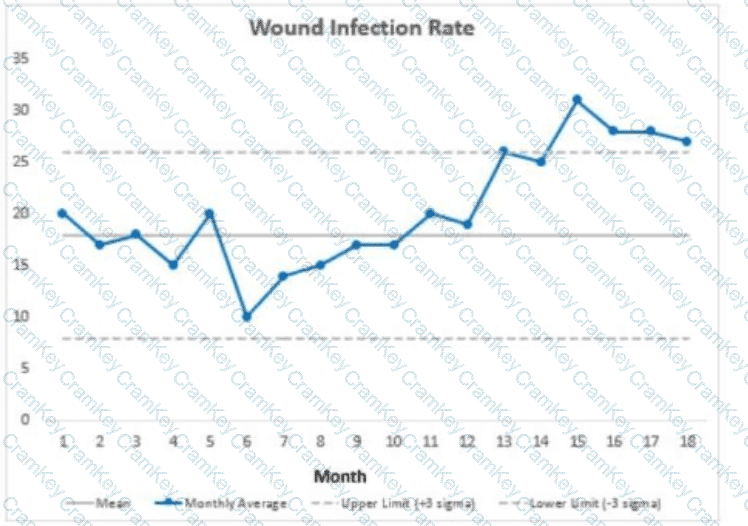| Exam Name: | Certified Professional in Healthcare Quality Examination | ||
| Exam Code: | CPHQ Dumps | ||
| Vendor: | NAHQ | Certification: | CPHQ Certification |
| Questions: | 685 Q&A's | Shared By: | lucien |
Analysis of the following wound infection rate control chart shows which of the following?

An interdisciplinary learn met to review readmission rates at a health system. Issues were identified withcommunication across care providers. The team is interested in improving the coordination of care process and is now reviewing four candidates to serve in the role of process champion:
Of the four candidates, which represents the most effective choice to serve as a process champion?
Which of the following action plans contains all key components of a SMART goal to support a strategic plan initiative?
Which of the following is a regulatory requirement to be undertaken by nonprofit hospitals?